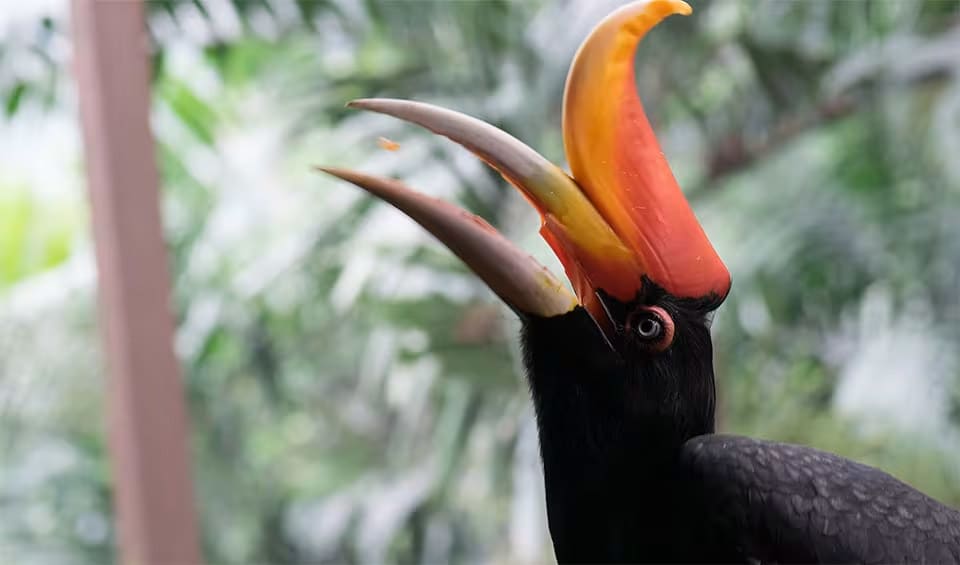A captivating denizen of the tropical rainforests of Southeast Asia celebrated for its striking appearance and fascinating behavioral traits. The Great Hornbill shares many similarities with its relative, the Rhinoceros Hornbill, and also exhibits remarkable breeding and parenting behaviors that highlight the strong bonds within its monogamous pair.
Like the Great Hornbill, Rhinoceros Hornbill pairs engage in a cooperative breeding strategy characterized by a division of labor between the male and female. After the female seals herself inside the nest cavity to incubate the eggs and care for the chicks, the male takes on the crucial role of providing food for the family. With his powerful bill and keen hunting skills, the male diligently gathers a variety of prey items, including insects, small vertebrates, and fruits, which he then delivers to the nest to feed his mate and offspring. This display of teamwork and trust between mates is essential for the successful rearing of their young.
The Rhinoceros Hornbill’s distinctive appearance sets it apart from other hornbill species. Adorned with glossy black plumage and accented by a vivid red or orange casque that sits atop its massive bill, this magnificent bird cuts a striking figure against the lush green backdrop of the rainforest canopy. The casque, which is composed of keratin, serves both ornamental and practical purposes, helping to amplify the bird’s calls and providing protection during aerial combat with rival males.
Beyond its physical attributes, the Rhinoceros Hornbill holds a prominent place in the cultural and mythological traditions of the regions where it is found. Revered as the ‘chief of worldly birds’ in many indigenous cultures, this majestic bird is often associated with power, wisdom, and spirituality. In Malaysia, it holds the esteemed title of national bird, symbolizing the country’s rich natural heritage and biodiversity.
Distribution
 Brunei
Brunei Indonesia
Indonesia Malaysia
Malaysia Singapore
Singapore Official estimate
Official estimate
 Thailand
ThailandAnything we've missed?
Help us improve this page by suggesting edits. Glory never dies!
Suggest an editGet to know me
Terrestrial / Aquatic
Altricial / Precocial
Polygamous / Monogamous
Dimorphic (size) / Monomorphic
Active: Diurnal / Nocturnal
Social behavior: Solitary / Pack / Herd / Flock
Diet: Carnivore / Herbivore / Omnivore / Piscivorous / Insectivore
Migratory: Yes / No
Domesticated: Yes / No
Dangerous: Yes / No
Rhinoceros hornbill on banknotes





